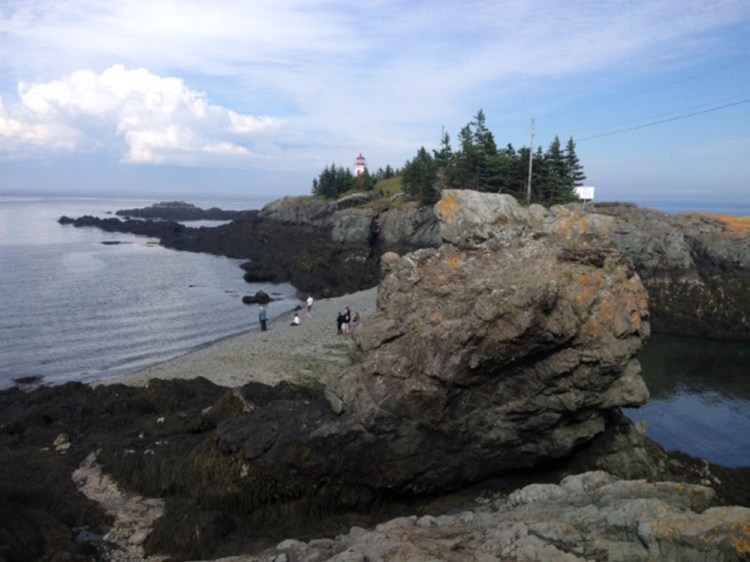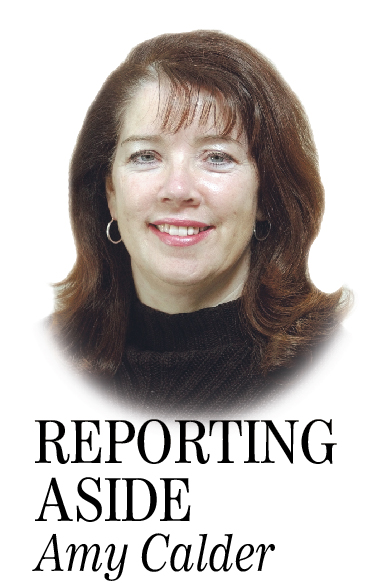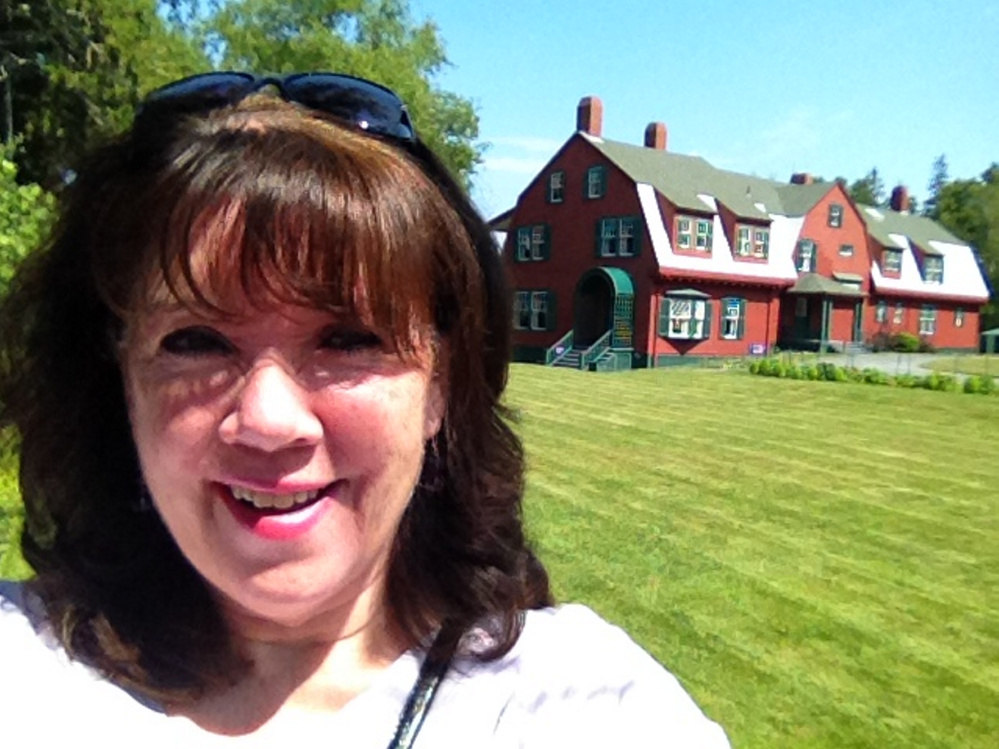As we motored along the Bay of Fundy off Campobello Island, I had that warm, familiar feeling of being home.
The unspoiled island in New Brunswick was the home of my ancestors, and it was my first visit there.
We had arrived in Lubec earlier in the day and settled into our motel right on the water. We learned there was a boat taking off at 4 p.m. for a whale watch, something I’d never done before.
It was a gorgeous two and a half hours meandering along the 9-mile shores of Campobello, cruising past the 34-room summer cottage of Franklin and Eleanor Roosevelt, watching salmon flipping out of the water in cages at a salmon farm near the Roosevelt dock and seeing a bald eagle in its nest.
Our captain, Milton, spoke via radio with other men piloting boats in the bay, conferring on where the whales were, particularly one they nicknamed Slice, as its dorsal fin had been shorn off by what Milton assumed was a propeller. A talkative man with a strong Campobello accent that forced us to strain sometimes to understand what he was saying, Milton has been captaining boats for 50 years and is a native of Campobello. After perusing the islands an hour or so and looking for the whales, he exclaimed, “Thar she blows!”
Just off the boat’s bow was a minke whale rising out of the sea, its fin truncated, and diving down again. We also saw other whales, porpoises and seals along this beautiful stretch of ocean.
The best part for me was seeing Campobello from the water before we were to visit it the next day.
My great-great-grandfather, Allen Cunningham Calder, was born on Campobello around 1836 and in his 20s was lost at sea in Passamaquoddy Bay. My father had often spoken about Campobello and how lovely it was, but for some reason, I had never traveled there.
Dad told me that our family of Calders were from Welshpool on the island and many also lived on Grand Manan, another Canadian island about 8 miles out to sea. I was intent on visiting Welshpool and the churches and cemeteries there in a quest to find some Calder graves, as well as the baptismal record of Allen Calder.
The next day we traveled across the short international bridge from Lubec to Campobello, passing through Canadian customs and heading to the Roosevelt cottage for a free tour. I spoke with docents who directed me to places in Welshpool where I might find information about my ancestors. One docent, Darlene, said she had Calders in her family and after chatting with me several minutes gave me a hug.
The people of Campobello are animated, interested in everyone and very welcoming. The cottage, purchased by Franklin’s mother, Sara, for $5,000 in 1909 as a belated wedding gift to her son and daughter-in-law, was spectacular with everything the way it was when the Roosevelts vacationed there. We attended Tea With Eleanor in a nearby cottage on the Roosevelt Campobello International Park grounds, where two female docents expounded on Eleanor’s life as we sat at round tables, sipping tea and nibbling on ginger cookies made from a Roosevelt recipe. It was a highlight of the trip.
Afterward, we headed to the center of Welshpool, where we met several older women hosting a lawn sale at St. Anne’s Church Hall next to St. Anne’s Anglican Church, built in 1855. When they learned that I was looking for information about my ancestors, they gathered around me, all talking at once, eager to help. I learned that the church’s records had been moved to Fredericton, the capital of the province of New Brunswick. A retired teacher named Irene walked me to the church and gave me a tour of its cool interior. The Roosevelts attended church there and a plaque honoring the late president hangs on the wall.
I was in awe really and especially so when we emerged from the church to see a gravestone bearing the name Calder just feet from the door.
We wandered through St. Anne’s cemetery behind the church, the oldest on the island, where I was stunned to discover not several, but many Calder grave stones, some very old and some new. I joked that there were more dead Calders in that cemetery than I have known my entire life. Instead of being eerie, it was rejuvenating, enthralling for me. I felt surrounded by kin and at home.
We explored the 9-by-3-mile island, visiting three other cemeteries where we found Calder stones, but nowhere near the number we had found at St. Anne’s. We traveled to the northernmost tip of the island to Head Harbour Lightstation, where views of the ocean were exquisite. We ate fishcakes and haddock at a small, family restaurant and headed back to Lubec.
Our motel, The Inn on the Wharf, is a former sardine factory that several years ago was transformed into a motel and restaurant with a large common room, full kitchen and outside decks right on the water. Our room was just feet from the ocean with three large windows overlooking the islands, an old push-button telephone and, best of all, no television. I remember thinking as I looked from the restaurant to the street that it was like being in Port Wenn, the fictional seaside setting for the British television series “Doc Martin.”
In the early mornings I’d sit by the windows in our room and watch the fog dissipate as the sun crept over the water in the quietest, most peaceful setting imaginable.
Lubec is a beautiful, unblemished seaside village — the easternmost town in the U.S. — where the people are exceptionally friendly and the houses old-fashioned and separated by tall grass and wildflowers just like in the old days. As we traveled up and down the short streets, we saw abandoned houses, some old and falling in, and there were plenty of properties for sale. My husband and friends tired of my exclaiming frequently, “It’s just like going back in time!”
It was a tough place to leave. I feel compelled to return to the quiet of Lubec, revisit Campobello and take a ferry to Grand Manan to explore more cemeteries and meet some living Calders.
I have a strong sense, contrary to folklore, that I can go home again.
Amy Calder has been a Morning Sentinel reporter for 28 years. Her column appears here Mondays. She may be reached at acalder@centralmaine.com. For previous Reporting Aside columns, go to centralmaine.com.
Send questions/comments to the editors.





